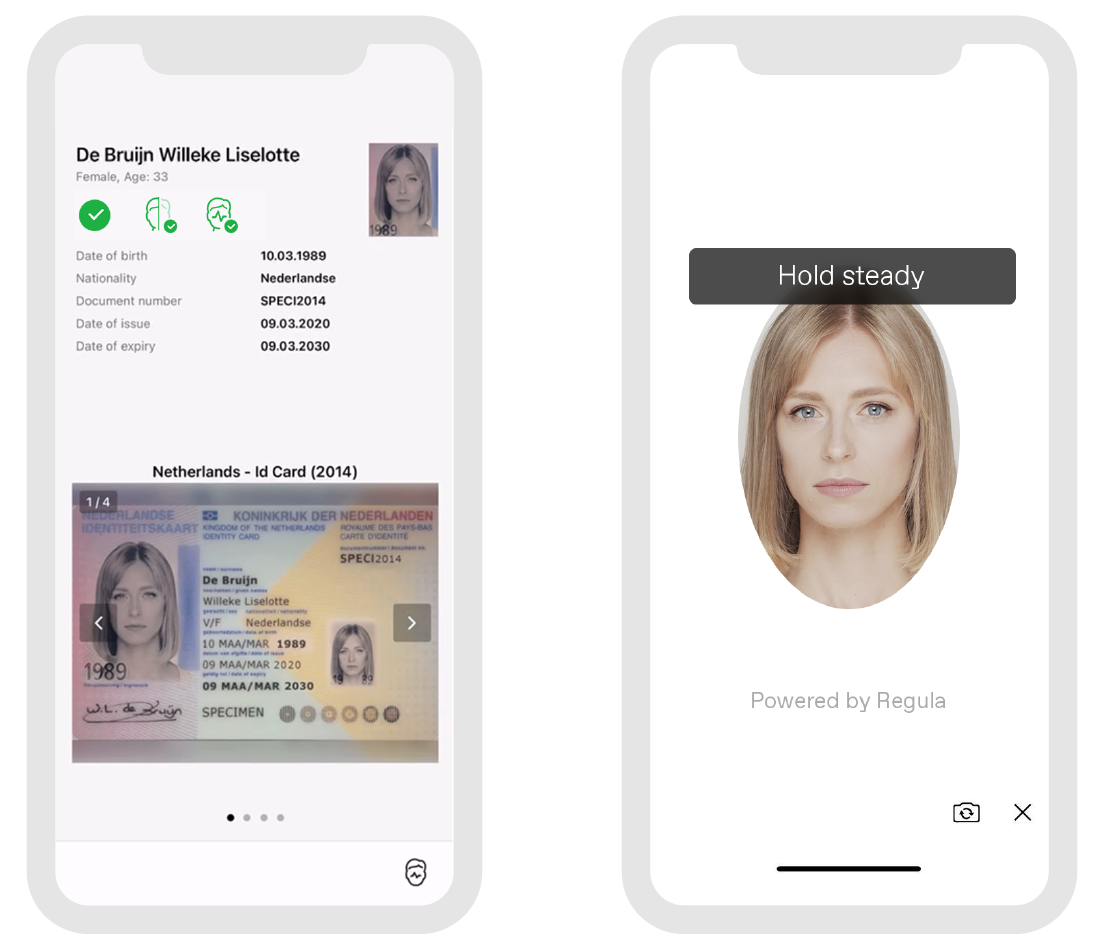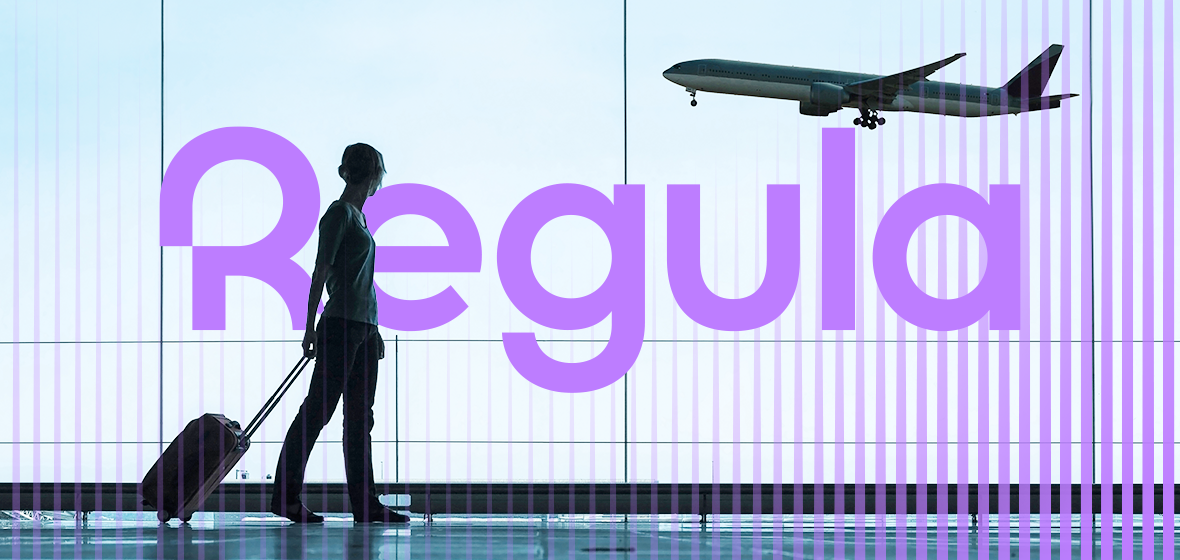The aviation industry has been rapidly recovering from the pandemic. Through the summer and fall of this year, crowded airports were a regular occurrence in many European countries. Though the dynamics are positive—it is expected that total passenger numbers will reach 3.4bn in 2023, up from 2.3bn in 2021—this jump-start has been quite challenging for the industry.
In addition to overwhelmed airport staff and passengers, this situation poses additional risks for airlines encountering difficulties coping with such a traffic avalanche. A dramatically increased number of travelers requires an increased focus from the airline staff that guides passengers through the check-in and boarding process. They have to ensure all the personal data of the passengers is correct and valid, that all the required fields are filled in properly, and that the travelers have all the documents they need to get to their destination, including vaccine certificates and other Covid-related documents.
When passenger volumes are at normal levels, typos or missing documents can be overlooked. At peak times, when you must “run as fast as you can just to stay in place”, there are more chances of this. There are more human-factor mistakes so typos in flight tickets and boarding passes, as well as unsuitable IDs and travel documents, appear more often. As a consequence, passengers get frustrated because they have unforeseen problems, like difficulties with boarding, crossing borders, being denied entry,
having additional expenses, and so on.
Passengers are not the only ones that suffer in this situation. Airlines suffer too—each incident with passengers’ personal data or travel documents results in heavy fines for the company. The number of fines being handed out to airlines worldwide is vast.
To delegate or not delegate
Many airlines delegate the responsibility of ID data entry and document verification to passengers themselves. There are usually two options—doing it manually, or using a special ID verification solution. The first has lower costs at the initial stage, since an airline can implement it with a simple fill-in form on its website. This approach does not eliminate human-factor errors that occur easily during manual data entry. Though passengers might make the mistakes and typos, the fines will be imposed on the airline.
Employing an ID verification solution is a more reliable way to delegate personal data entry to travelers. It can be done both for web and mobile applications, and we see that more and more
airlines choose this approach, introducing new apps and new pre-flight experiences for their passengers. Embedding an ID verification solution into passenger self-services benefits both travelers and airlines:
● It automates the data entry process. All a passenger needs to do is scan their ID with a camera, and all the data is instantly filled in across all required forms. As a result, the airline is protected against penalties, charges, and frictions due to accurate and error-free data extraction.
● It facilitates the whole process of personal data entry and checking, saving you time and money by preventing wasted time on presenting physical documents and reducing the bottlenecks that create long queues.
● It adds an additional layer of safety since such solutions introduce a proper ID verification process with maximum data privacy and security.
● It allows an airline to build a complex ID verification system: from booking, ticket-buying, check-in, and bag drop, all the way up to biometric identity and facial recognition boarding systems.
● It improves the traveller experience by offering a touchless, hygienic (due to less contact and fewer physical touchpoints), simple, and more efficient, travel experience, and also contributes to digitalization, which entails an increase in revenue and loyalty.
● By automating the identity verification routine, aviation companies benefit from increased operational efficiency, thus providing their teams with more time to focus on clients rather
than manual verifications.
● Last but not least, it makes the airline more environmentally friendly and sustainable thanks to less printing and paper waste.
Multiple studies show that travelers are now more ready and eager than ever to welcome digital services from airlines, and are happy to indulge in self-check-in and ID verification. So, why not
try it?
How to choose the right ID verification solution
The current ID verification market offers a vast variety of solutions to choose from. It is important to understand which one suits you best. These are some hints.
First, as an airline, you’re very likely to deal with numerous IDs from all over the world. They might be regular travel documents (like ID cards or ordinary passports), including ones from very remote countries. These might also be more specific documents, like laissez-passer, refugee cards, crew member certificates, and others. The reality is that not every ID verification solution (frankly speaking, very few of them) is able to recognize and read all this variety of identity documents that passengers can provide. So, when choosing an ID verification provider, it is highly recommended to pay attention to their ID database, its depth, and volume.
 Second, user experience is crucial. Despite the fact that travelers are interested in self-services when planning their trips, they are seriously preoccupied with their data privacy. Breaches occur
Second, user experience is crucial. Despite the fact that travelers are interested in self-services when planning their trips, they are seriously preoccupied with their data privacy. Breaches occur
more and more often, so it’s no surprise that people are not at ease with sharing their sensitive personal information (like ID data) with someone else. How to make passengers feel more confident about their data security? On the one hand, you can skip third parties in the process of data sharing.
Here, we are talking about the use of on-premise solutions rather than cloud-hosted services, where all the sessions and information are stored strictly inside your secure perimeter and the ID verification provider doesn’t have access to your passengers’ data. Also, you can choose in favor of white-label solutions: in this case, an ID verification solution can be seamlessly integrated into your own user interface and passengers won’t feel awkward or perplexed by the interference of an unusual interface or unknown logos from the ID verification provider.
Finally, when choosing an ID verification provider, it’s really important to understand that you trust their service, their checks, and their expertise. When you delegate, you shouldn’t have to bother with that task anymore. How do you know that an ID verification provider is trustworthy? The logical answer is the quality of their solution. To evaluate this, you have to look deeper than just checking what technologies that solution employs. No technology will work perfectly without the know-how that a developer should possess.
Neutral networks won’t be able to properly recognize document types if the developer lacks the knowledge of all the diversity of world IDs. Data capture won’t function well if the solution doesn’t “know” what to look for in a document and where. And no verification will be deep enough if the provider doesn’t have a reference for proven authentic documents. A vendor can get all this knowledge, for example, from forensic research and close cooperation with regulators, government bodies, and border control authorities. In this case, they are able to provide a level of security and trustworthiness that the most demanding clients—state border authorities—are satisfied with.
How did they do it?
A number of global airlines have already implemented ID verification software to enable fast and accurate self-check-in and create a totally new experience for their passengers. For instance, Wizz Air, Europe’s fastest-growing airline, started their transformation of travelers’ pre-flight experience with the introduction of remote self-check-in in their mobile app. The service is based on automated ID verification performed by Regula Document Reader SDK.
Thanks to the industry’s largest document template database that Regula maintains, the Wizz Air travel geography is open to almost anyone in the world regardless of the origin of their IDs. The new self-check-in procedure is as fast and simple as possible. All a passenger needs to do is scan their ID with a mobile device camera. Personal data recognition and verification is carried out automatically by Regula Document Reader SDK, which is embedded in the Wizz Air application. The app also suggests a passenger save their document in order to avoid repetitive scanning
and verification for future bookings and flights, which also contributes to comfort and ease of travel. Such a time-effective approach facilitates and speeds up more than 10 million yearly check-ins and boardings using fast and accurate ID scanning and verification. As a result, passengers can enjoy a way more convenient and secure travel experience, leaving time-wasting manual data entry and boring queues at control points in the past.
Another example is Pegasus Airlines, a forward-thinking Turkish company. Their goal was to expedite check-in and boarding by making personal data entry intuitive, fast, secure, and accurate. With the help of the Regula solution, Pegasus Airlines has made the check-in process as simple as 3 easy steps: opening an application, choosing the flight, scanning an ID—and the passenger is registered. The simplified check-in has been well received by Pegasus passengers. They have proved to be enthusiastic adopters of mobile booking and check-in, and have greatly appreciated the intuitive, streamlined travel experience.
A leading airline in the Asia Pacific region, AirAsia, also opted for the Regula ID verification software. The airline’s main aim was to introduce contactless check-in/boarding procedures to mitigate risks related to Covid-19. To this goal, AirAsia launched a touchless identification and contactless self-clearance platform called FACES, available on their mobile app. The Regula Document Reader SDK became the core element of FACES. It makes the process of self-check-in fast, reliable, seamless, and paperless. It takes about 30 seconds from start to finish and can be done by a user anytime and anywhere. All a passenger needs to do is open the AirAsia app, click FACES, snap a selfie, and upload a picture of their identity document. The authentication is processed automatically, with the ID being verified by Regula Document Reader SDK. After that, a personalized QR code is generated, and the passenger is set to travel queue-free and contact-free. To date, AirAsia has seamlessly enrolled over 600,000 passengers into the FACES program, a number which is growing fast as digital technology continues to take the hassle out of air travel in the post-Covid world.
Regula is a global developer of forensic devices and identity verification solutions. With our 30+ years of experience in forensic research and the largest library of document templates in the world, we create breakthrough technologies in document and biometric verification. Our hardware and software solutions allow over 1,000 organizations and 80 border control authorities globally to provide top-notch client service without compromising safety, security or speed. Regula was named a Representative Vendor in the Gartner® report “Market Guide for Identity Proofing and Affirmation” in 2022. Learn more here. Regula’s content is available for on-demand viewing on ICAO TV.



